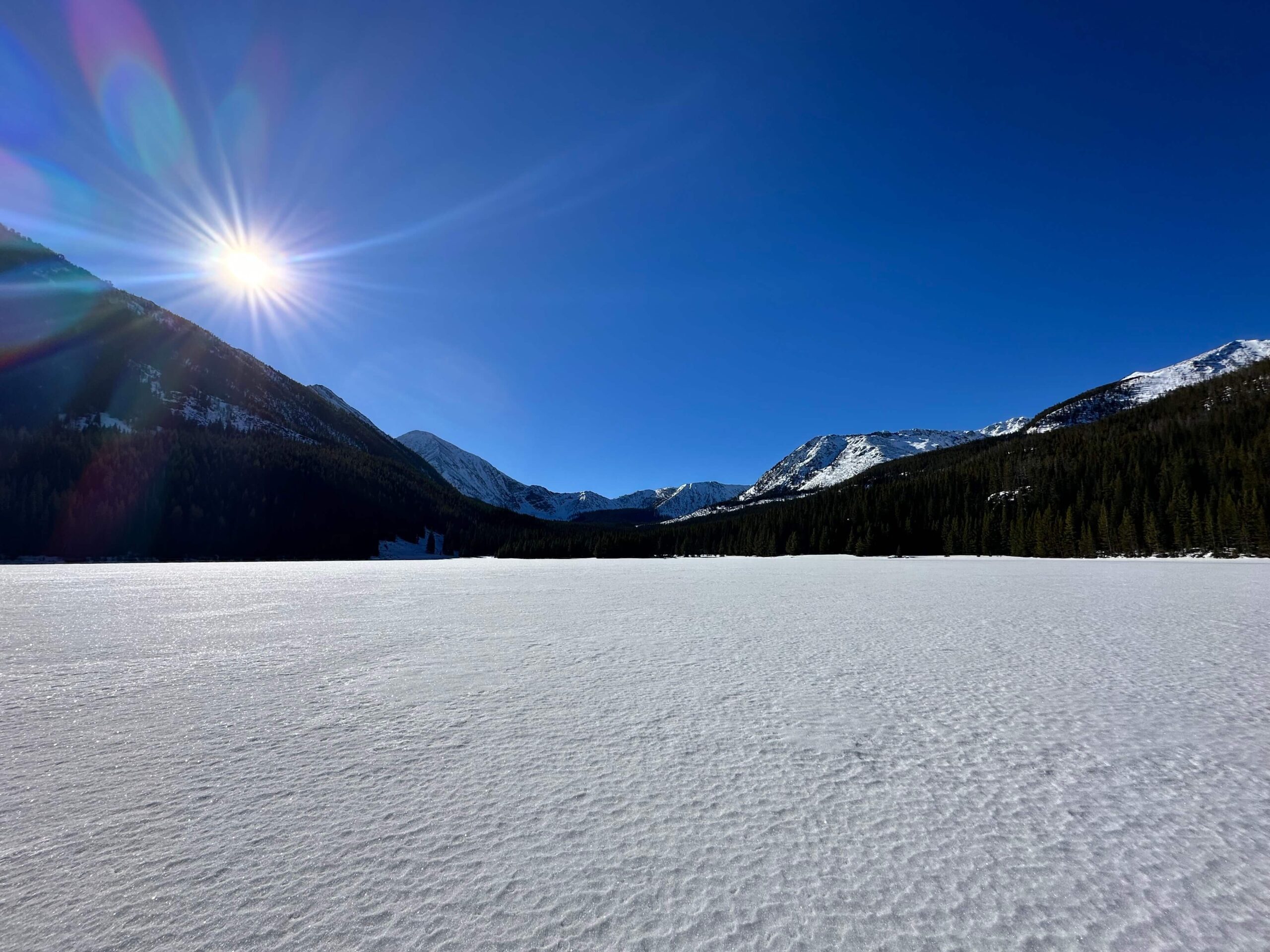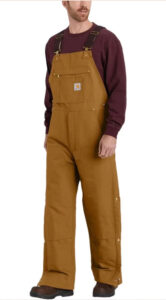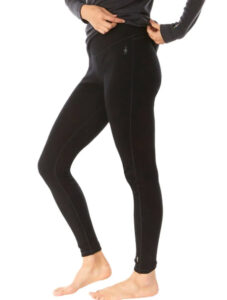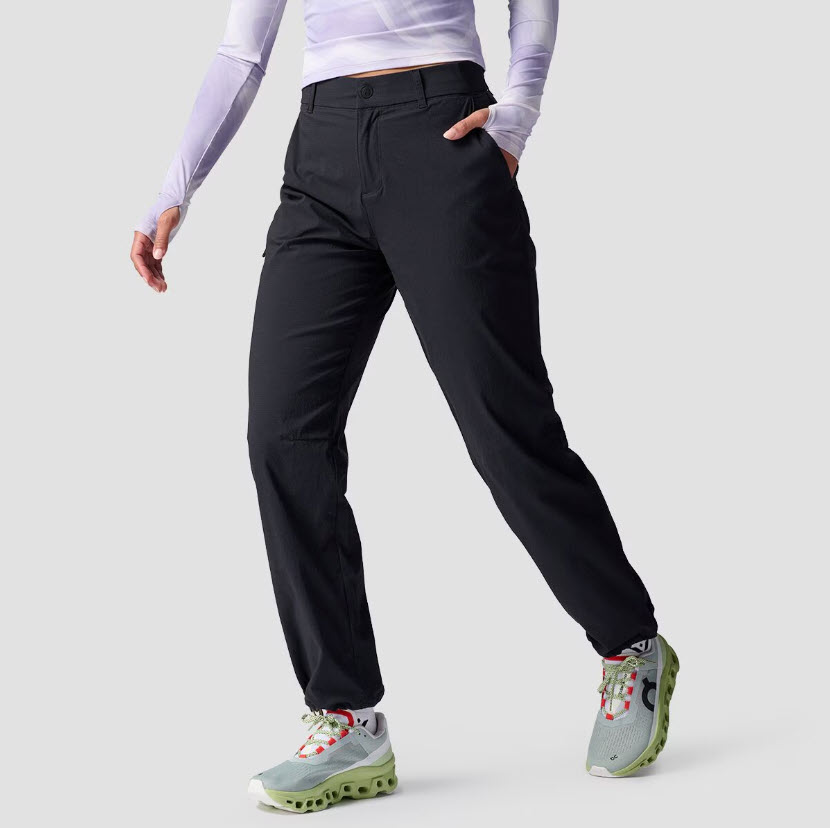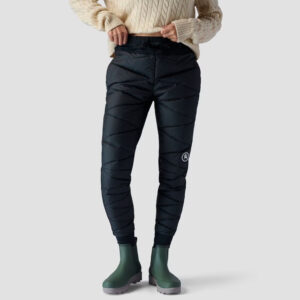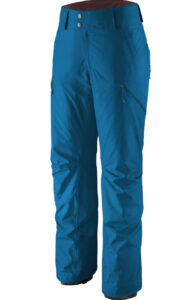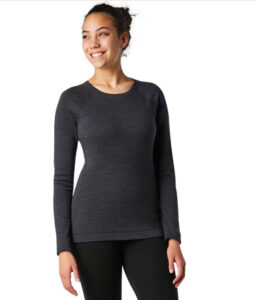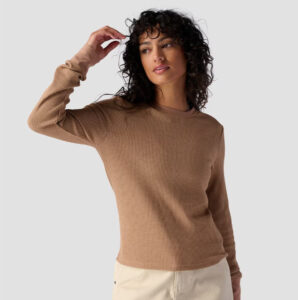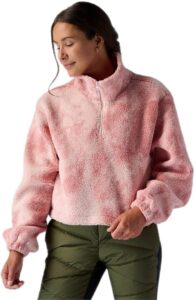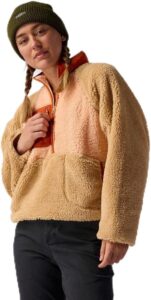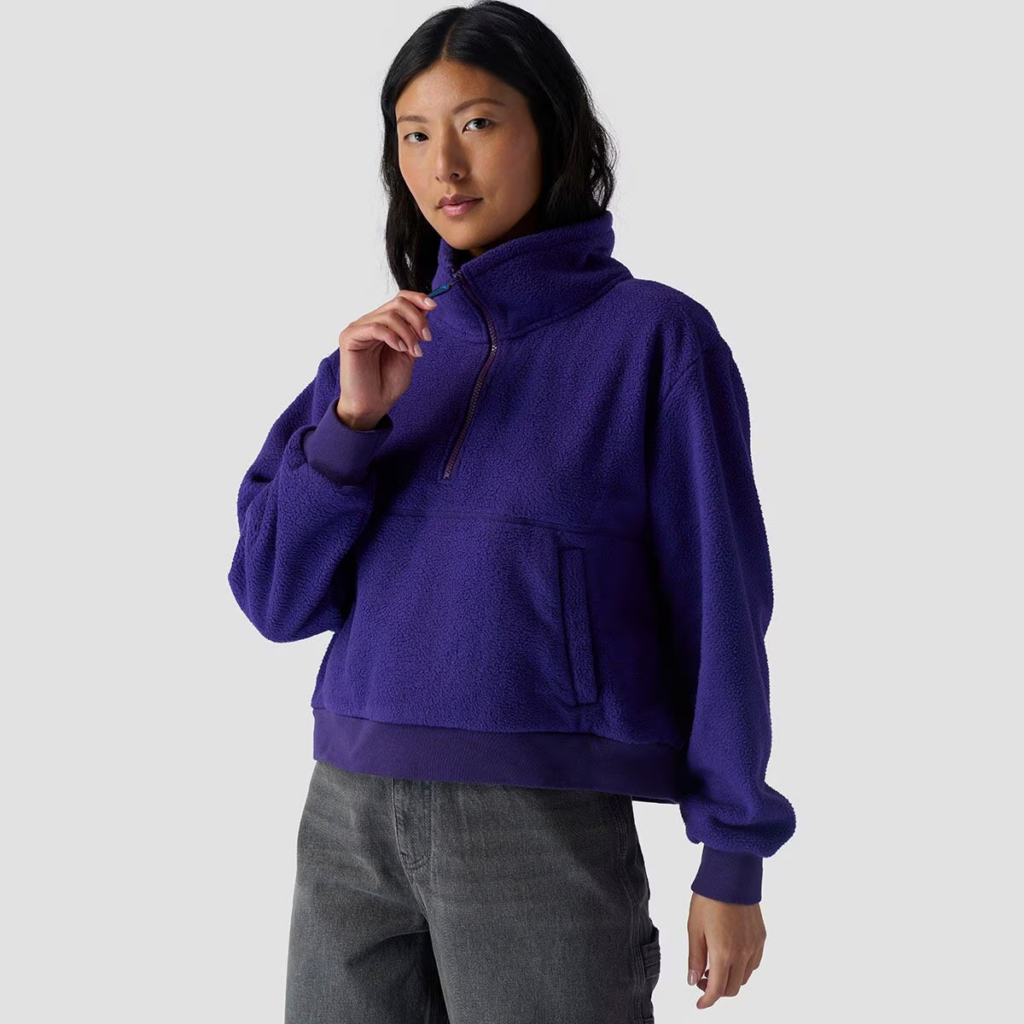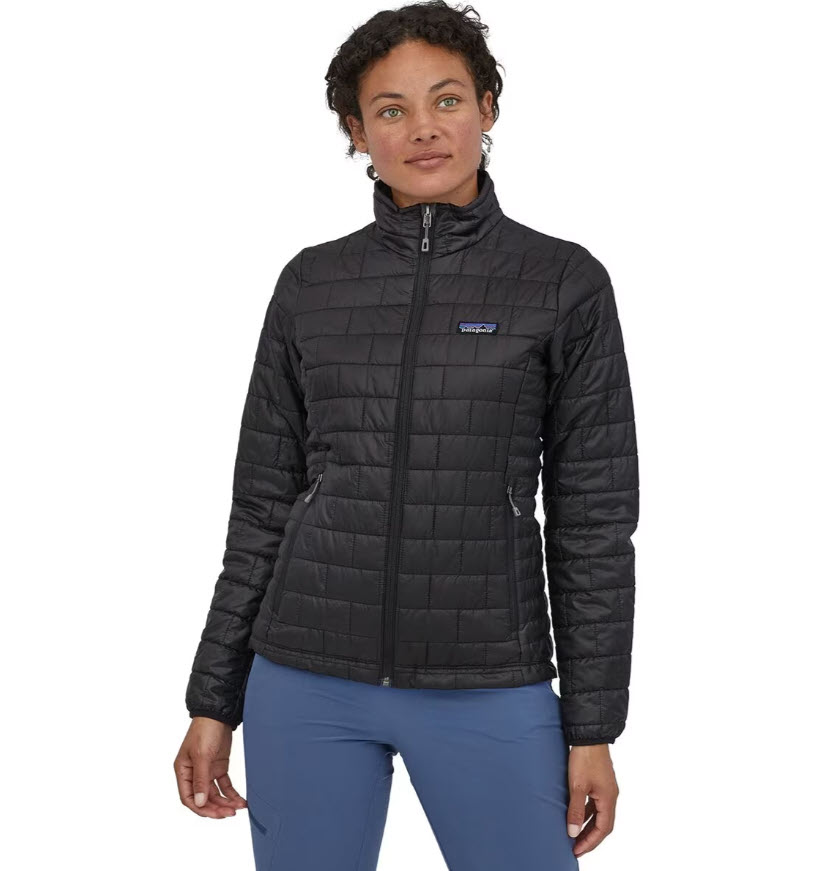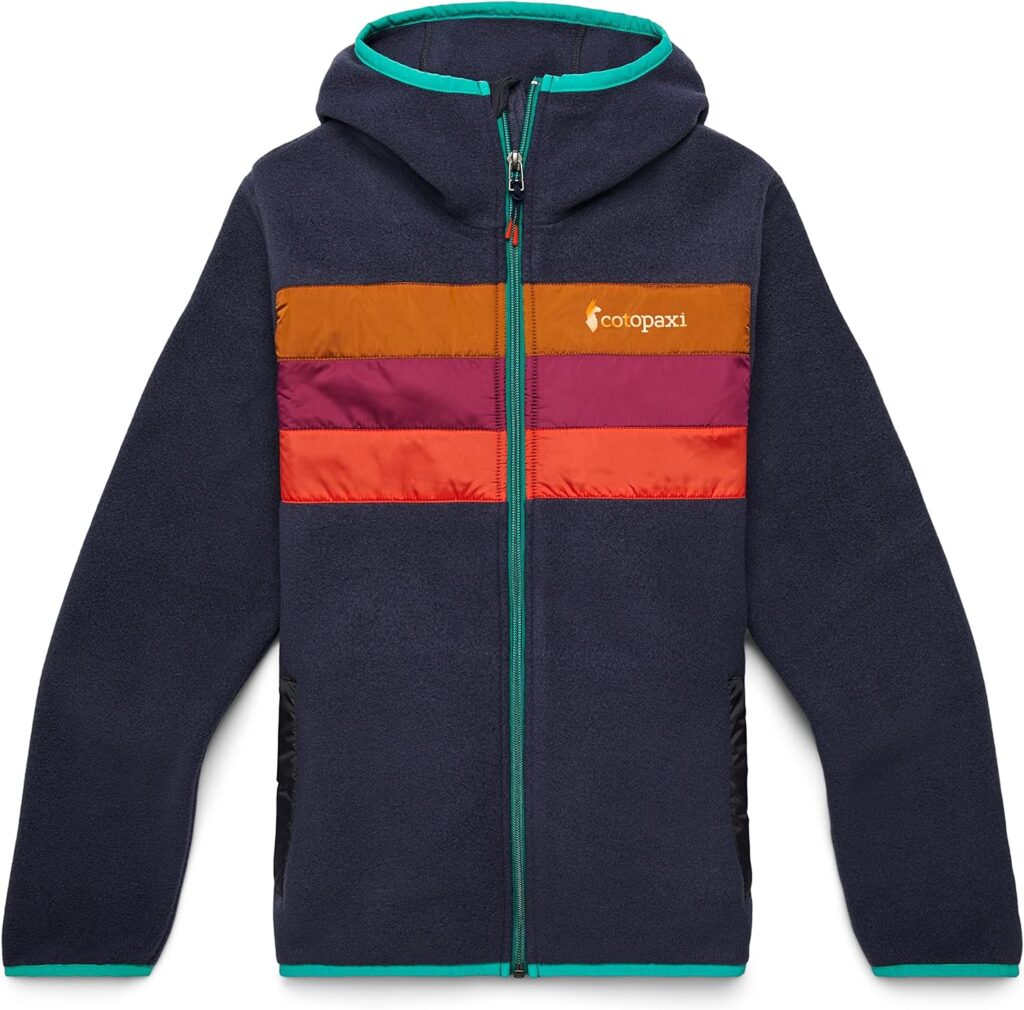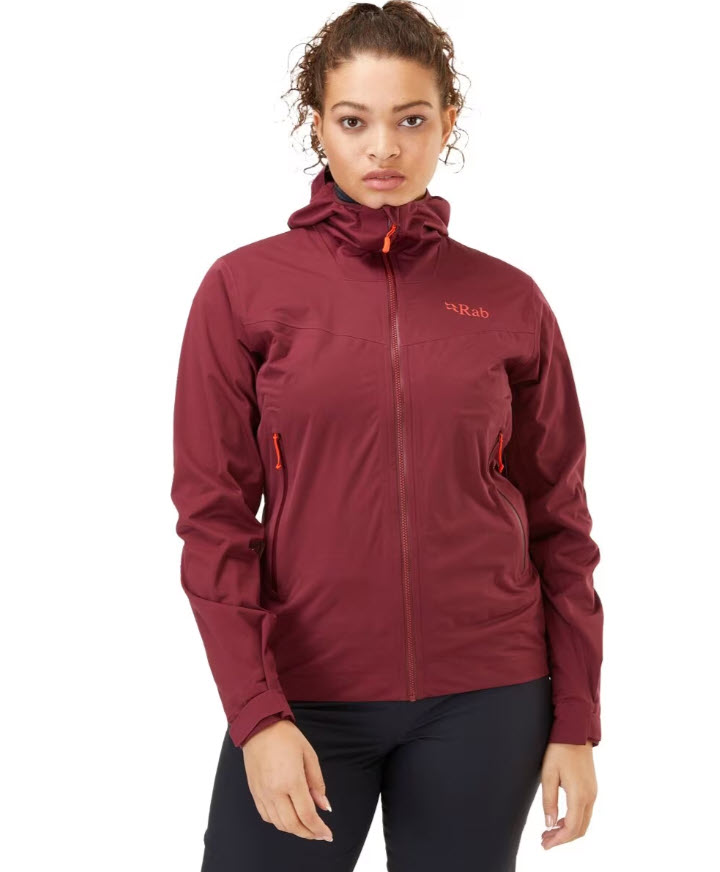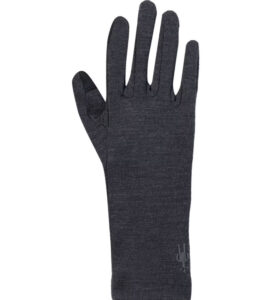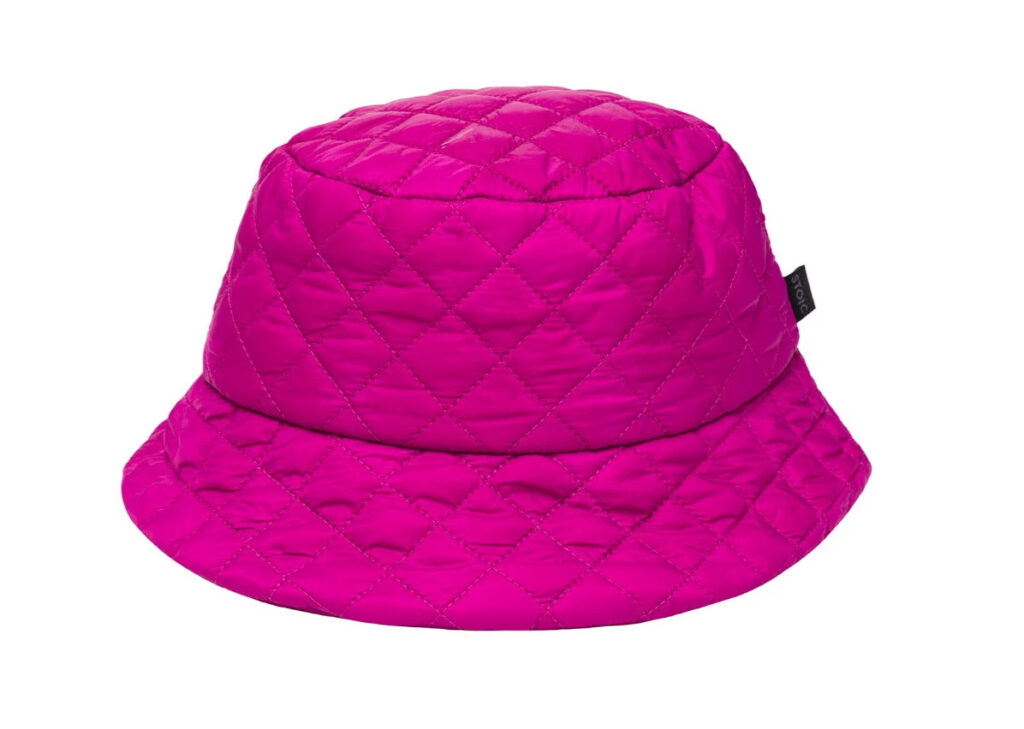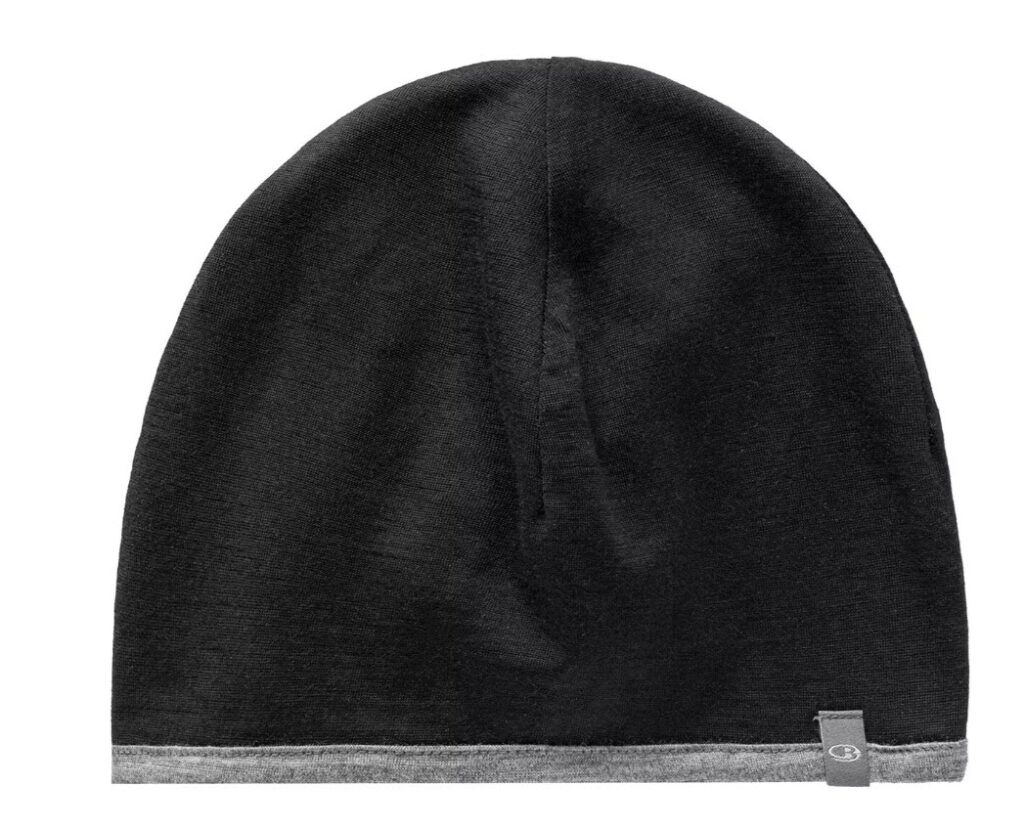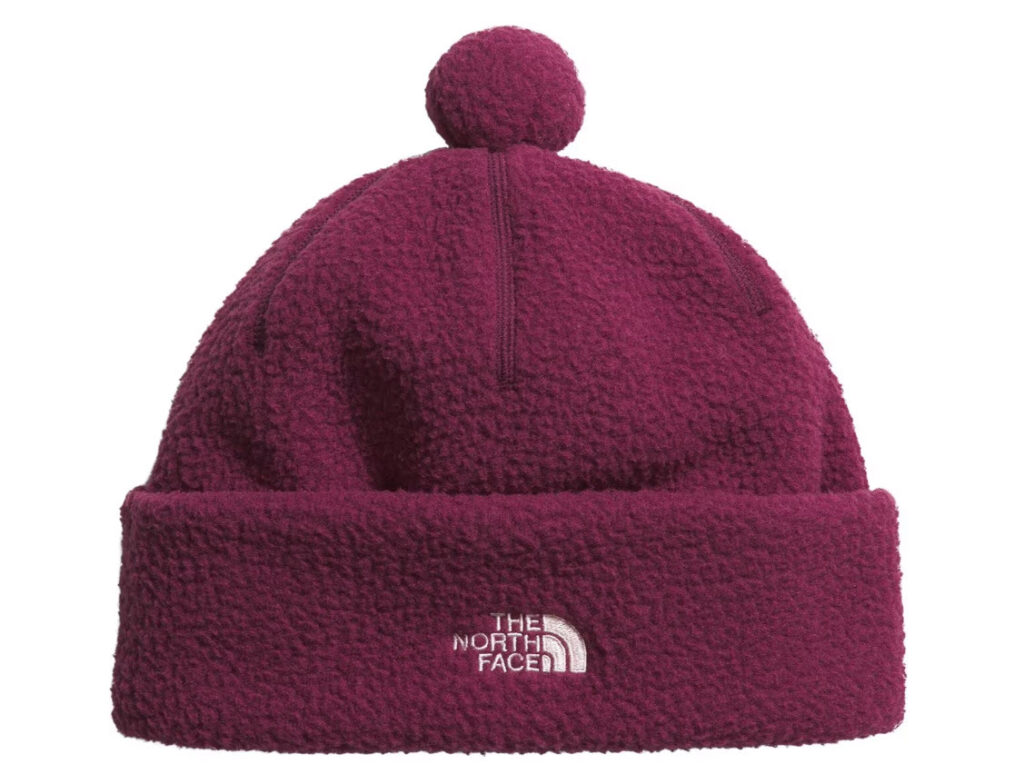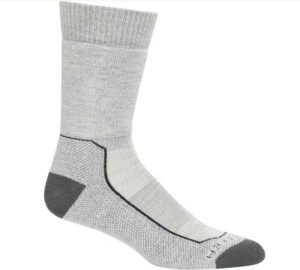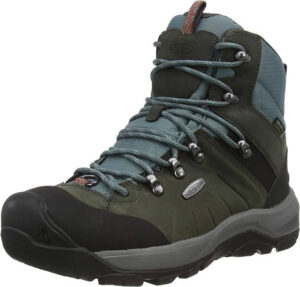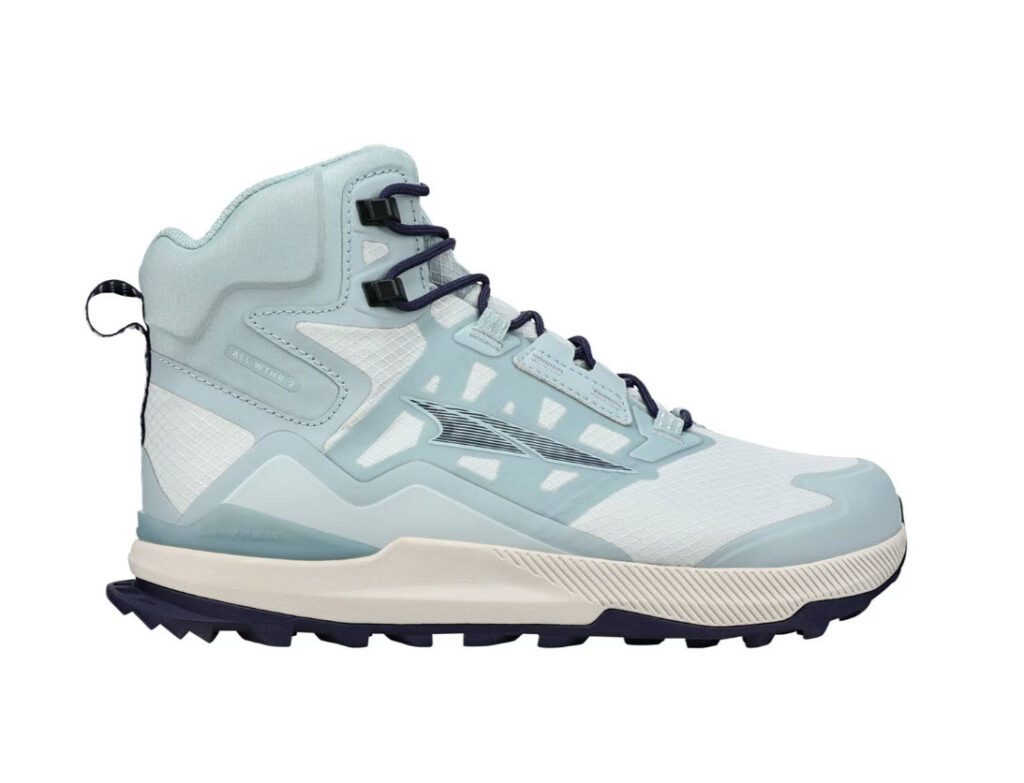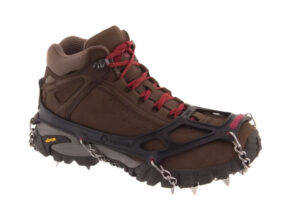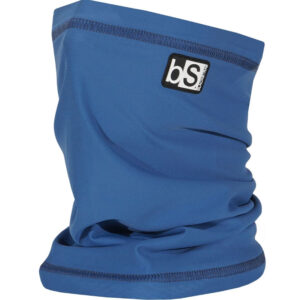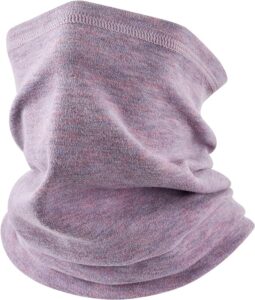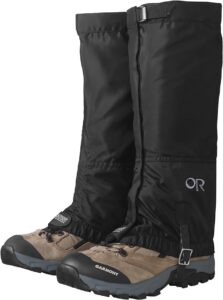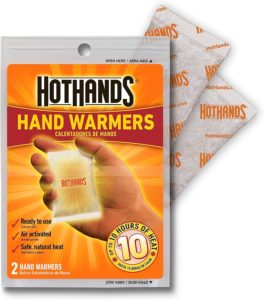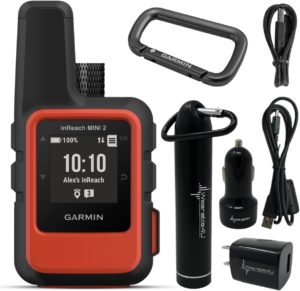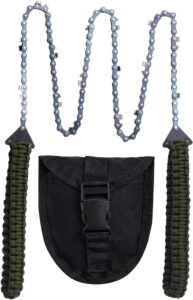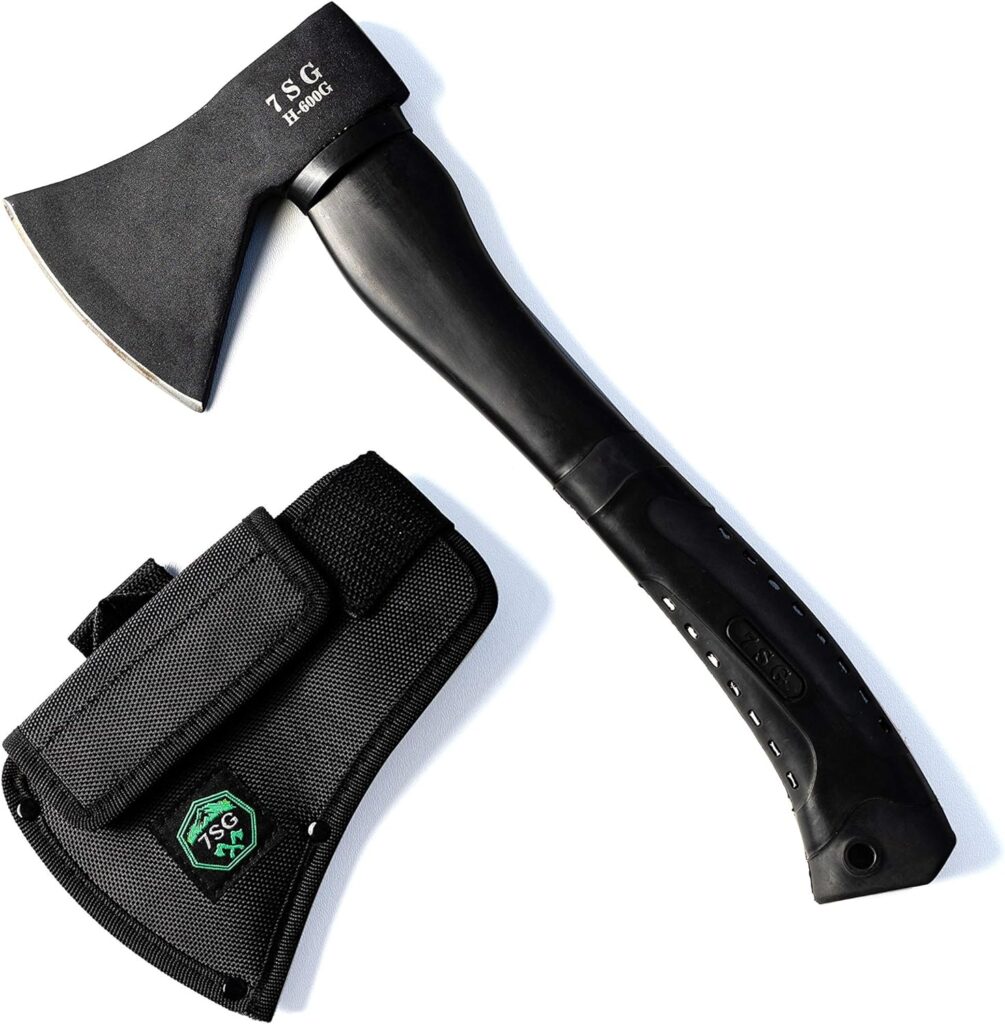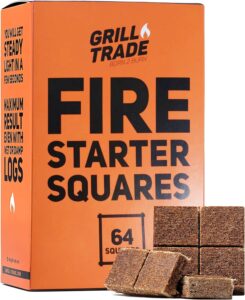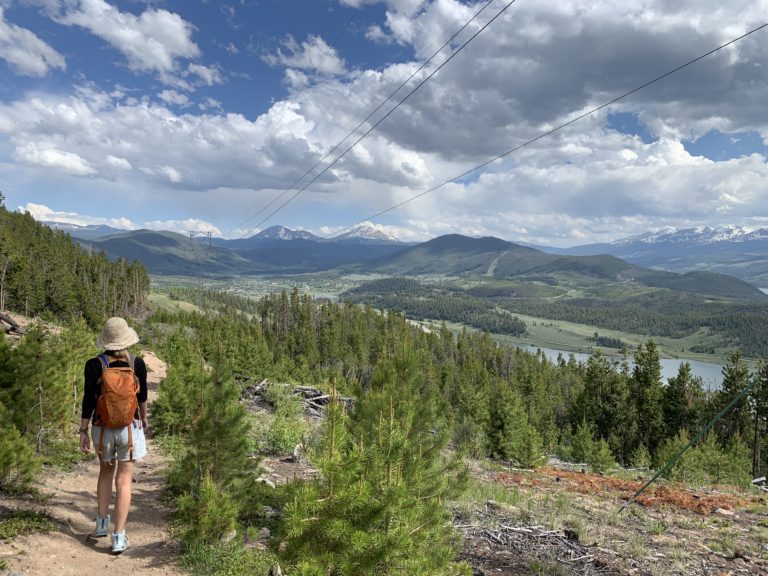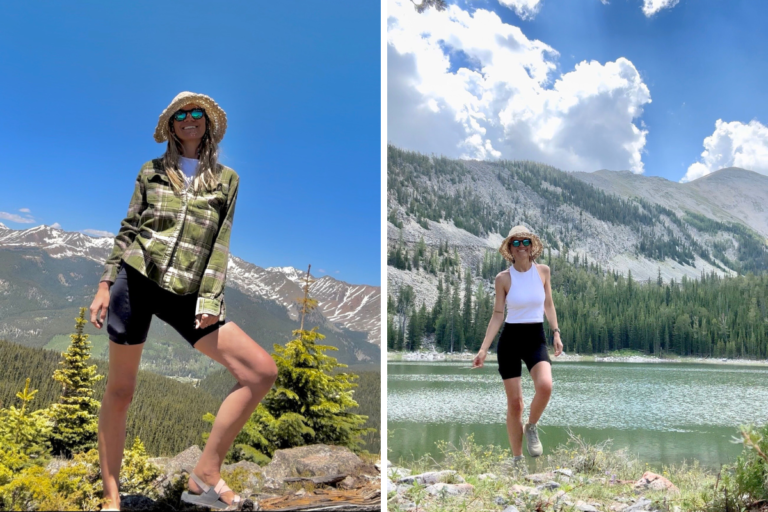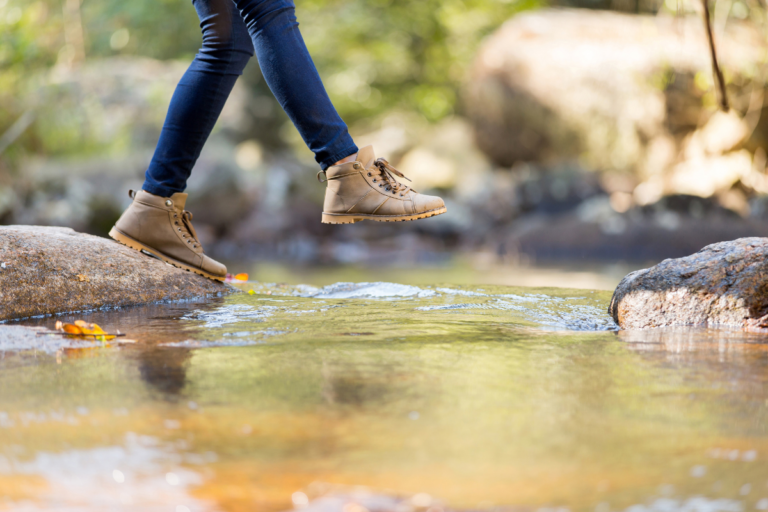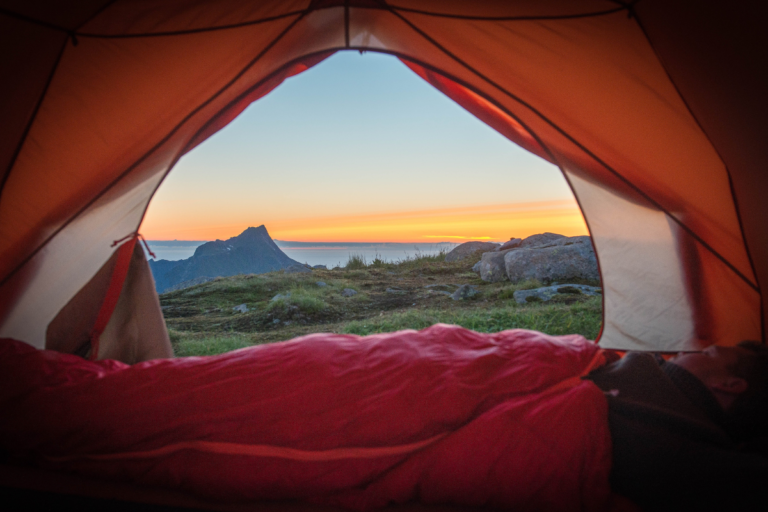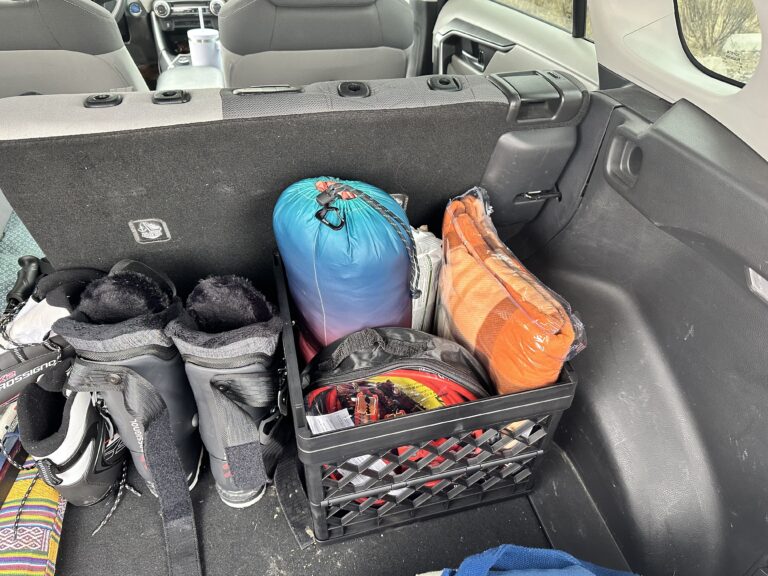Winter Hiking Gear: What I Wear When Hiking In Cold Weather
FYI: This post definitely contains affiliate links. If you buy anything through these links, then I’ll earn a small commission at no cost to you. See my commission disclosure if you want to know more about it.
It has been unseasonably warm this winter, so there hasn’t been enough snow for skiing. It’s been pretty devastating for me but also opened up a whole new hiking season for me: winter.
Because I just moved back to the US less than a year ago and had previously lived in tropical places around the world, I’ve had to stock up my entire wardrobe to accommodate cold weather.
Here is all of the winter hiking gear and clothes that I’ve found essential to hiking in cold weather.
Tips For Hiking In Cold Weather
If you haven’t heard it already, then let me emphasize just how important a layering system is when hiking in cold weather. You’ll need to be prepared for extremely cold temperatures with the ability to remove layers as you warm up.
The layers trap body heat by providing pockets of air between each clothing item, further removing your body from the cold weather outside of your clothes. The cold air has to first heat up the pocket of air in between each layer before it can start to cool your body.
A good layering system has:
- Base layers: Your base layer will likely never come off on winter hikes. They are thinner and are often made with materials like merino wool and wick moisture.
- Mid layers: Your mid layer is your warm insulating layer, so might include a fleece and down jacket.
- Outer layers: Your outer layer are your waterproof layers, so are often thin waterproof shells that both keep water out and body heat in.
Cold weather hiking clothes are really just all of the appropriate layers. There is no single best winter jacket, imho. Instead, layering your regular hiking clothes will give you the warmth and protection that you need when hiking in cold weather. How many layers you actually wear is up to you, but this is what I wear hiking in cold weather:
- Base layers: Classic Thermal Merino Baselayer Bottom, Classic Thermal Merino Crew Baselayer, Wicking Waffle Long-Sleeve Crewneck, Emblem Midweight Soc
- Mid layers: Cotopaxi Teca Fleece Hooded Full-Zip Jacket, Polar Fleece 1/4 Zip, Nano Puff Insulated Jacket, Hike+ Medium Crew Sock
- Outer layers: Kinetic 2.0 Jacket
This is for temperature ranges between the 20s (Fahrenheit) and 50s. If it starts getting to the low 20s and teens, then I’ll add another insulated mid layer on both my top and bottom. I’d also opt for insulated hiking boots and warm gloves.
Hiking In Snow
The same principles above apply to hiking in the snow, but you’ll want a good waterproof layer over the top of that. Take a look at my guide to winter gear for women to see what that looks like.
That being said, you’ll want a few essentials for hiking in freezing temperatures:
- Wool base layers
- Fleece mid layers
- Insulated down jacket and pants
- Waterproof outer shell
- Insulated waterproof hiking boots
- Merino wool or fleece beanie
- Synthetic and wool sock combo
I often add a shirt or two in between the base layer and mid layer for extra warmth.
Keep in mind that all of these winter hiking clothes and gear are based on temperatures above 0 degrees Fahrenheit up to the 40s and 50s. If you’re outside in sub-zero degree weather, then you’ll need seriously insulated clothing. In lower temps like, I really like these insulated Carhartt coveralls.
I wear these when I go ice fishing, so I know that they are extremely cozy when paired with merino wool base layers and a fleece mid layer. In any case, I don’t really recommend hiking in cold weather below -20 degrees Fahrenheit unless you are extremely comfortable with cold weather activities.
Winter Hiking Essentials
Okay that time has come! Here are all of my absolute essentials for winter day hiking that will help you stay warm without slowing you down.
Top Winter Hiking Clothes For Women
My winter hiking clothing comes down to these essentials:
- Best winter hiking pants: Classic Thermal Merino Baselayer Bottom + Stansbury ALLIED Down Tight or Wasatch Ripstop Trail Pant
- Best winter hiking jacket: Nano Puff Insulated Jacket + Cotopaxi Teca Fleece Hooded Full-Zip Jacket
- Best fleece jackets: Stoic, MTN 1/2-Zip High Pile Fleece PulLolever + Stoic, Printed Mid Pile Fleece 1/4 Zip PulLolever + Polar Fleece 1/4 Zip
- Best winter hiking socks: Emblem Midweight Sock + Hike+ Medium Crew Sock
- Best cold weather hiking boots: Lone Peak All-Weather Mid 2 Hiking Boot
Although this is my usual getup, these are all of my other winter hiking clothes that I swap in depending on the temperatures. For colder weather, I use lots of insulation and fleece. On warmer hikes, I use thinner layers.
Best winter hiking pants
I have allllllll kinds of hiking pants. My layering system always begins with hiking leggings, then an insulating mid layer of fleece or down, and a waterproof outer layer. Rain pants, like the Wasatch Ripstop Trail Pant, make for a great outer layer on warmer days. This is my go-to system at the moment: Classic Thermal Merino Baselayer Bottom and Wasatch Ripstop Trail Pant.
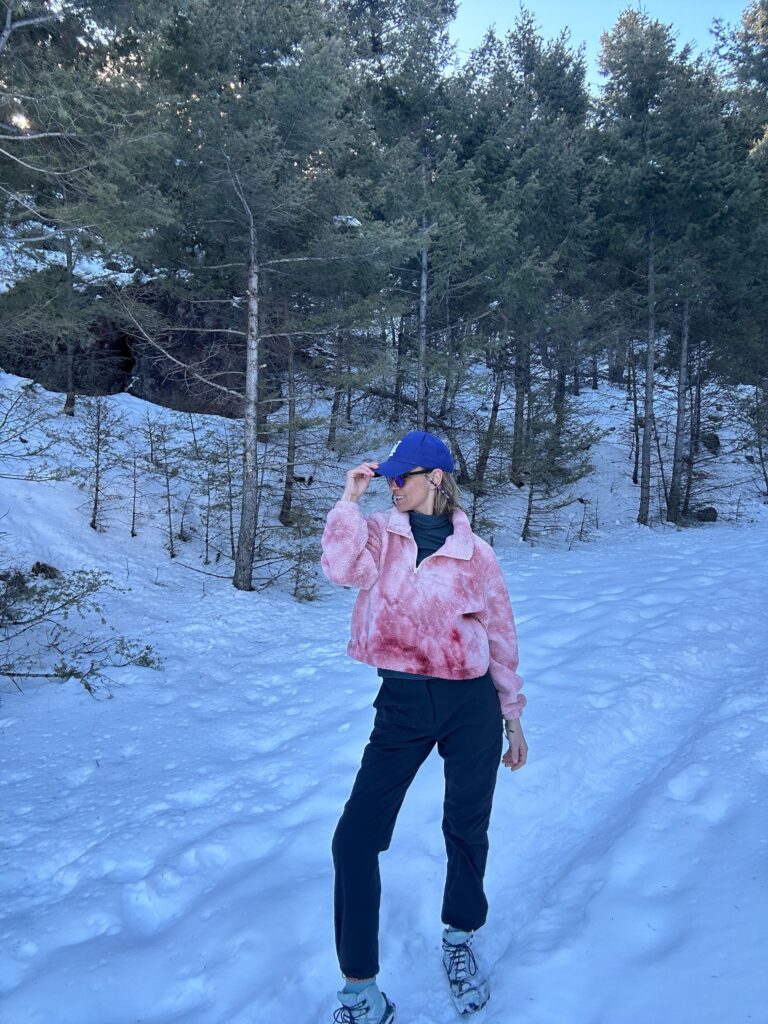
Ski pants could work really well as well, but I find them a bit bulky for me. They’re better suited for freezing temperatures; if the weather is a bit warmer then you won’t need as much insulation.
This is everything I own and I mix and match depending on how I feel and hold cold it is:
- Base layer: Classic Thermal Merino Baselayer Bottom
- Lightweight Waterproof: Wasatch Ripstop Trail Pant
- For insulation: Gihuo Windproof Down Pants, Stansbury ALLIED Down Tight
- Insulated and waterproof: Patagonia Powder Town Pant
Best base layer tops
The more layers you have, the more you can protect yourself from any wind chill. So if you’re heading out into the cold wind, then you’ll need a few base layers. You can always take layers off but you can’t easily recover from being too cold!
- Smartwool: Classic Thermal Merino Crew Baselayer
- Midweight tops: Wicking Waffle Long-Sleeve Henley, Wicking Waffle Long-Sleeve Crewneck
Best Fleece Jackets
I am low key obsessed with my Stoic fleece jackets and wear them almost everyday. They’re cute, warm, and easy to throw over a base layer. I was able to hike in the snow in them this winter and stay pretty warm (in 40 degree weather, so it was still relatively warm outside). I also could throw my puffer jacket over them when the wind picked up, though it was a snug fit.
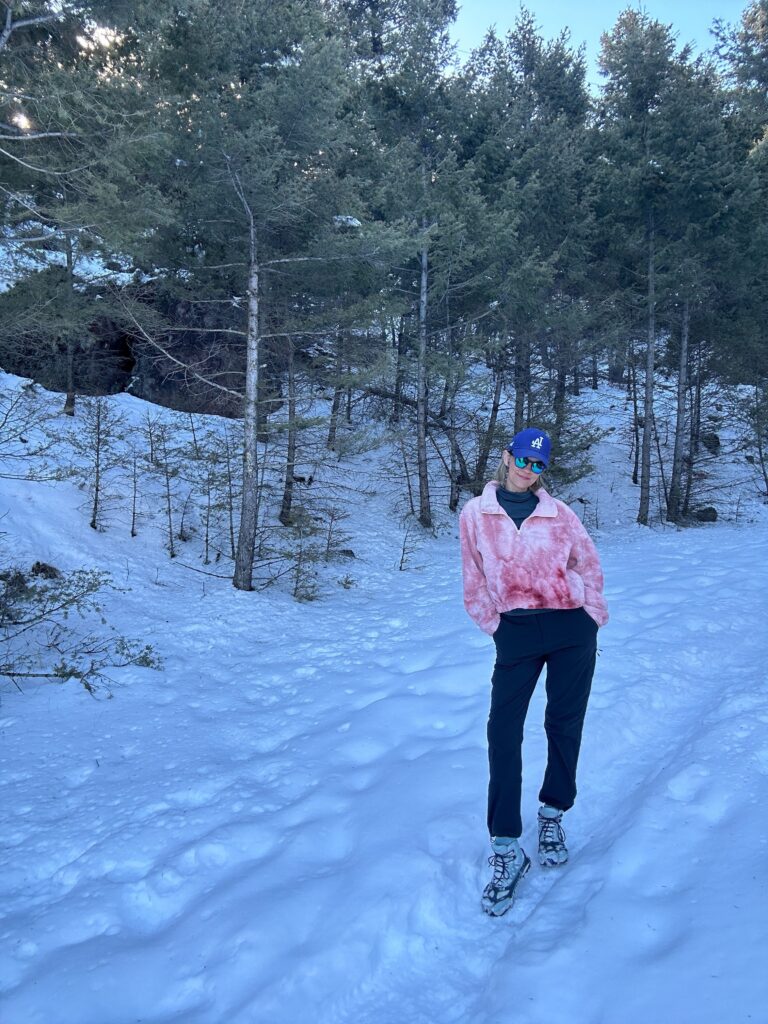
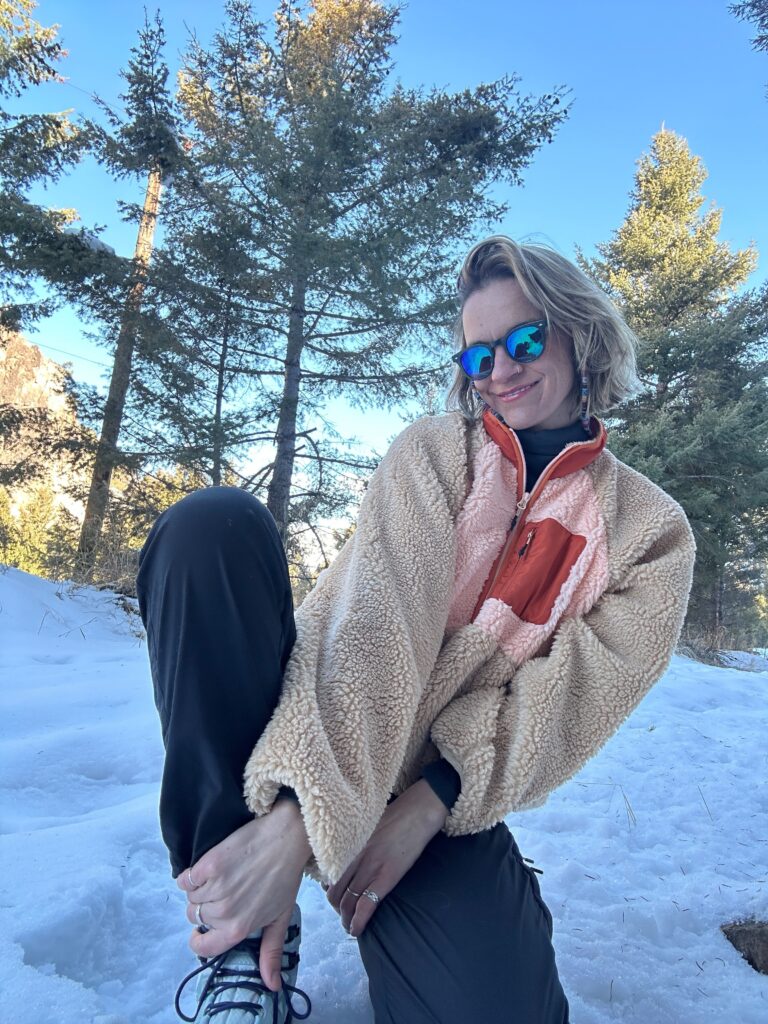
You can see me in the Wasatch Ripstop Trail Pant and my favorite Stoic fleece tops. You can shop for Stoic products on Amazon and at Backcountry. These are the two tops pictured above, plus another Stoic fleece I have and wear obsessively:
Best winter hiking jacket
I typically have two winter jackets whenever hiking in colder temperatures: an insulating layer and an outer shell. Your waterproof outer layer should be wind resistant, keeping the cold air from seeping into the rest of your body. It also traps the heat in so that your core body temperature can stay nice and toasty.
This is my winter jacket setup:
- For insulation: Nano Puff Insulated Jacket, Quilted 1/2 Snap Pullover
- Best fleece: Better Sweater Jacket, Cotopaxi Teca Fleece Hooded Full-Zip Jacket
- Best waterproof: PreCip Eco Jacket, Kinetic 2.0 Jacket
I have the Kinetic 2.0 Jacket and use it like a rain jacket to wear over all of my insulating layers. It keeps me dry and helps keep the heat in, but it is not insulated whatsoever. Another feature I like about it is the zippers under the arms to dump heat when I get too hot moving around.
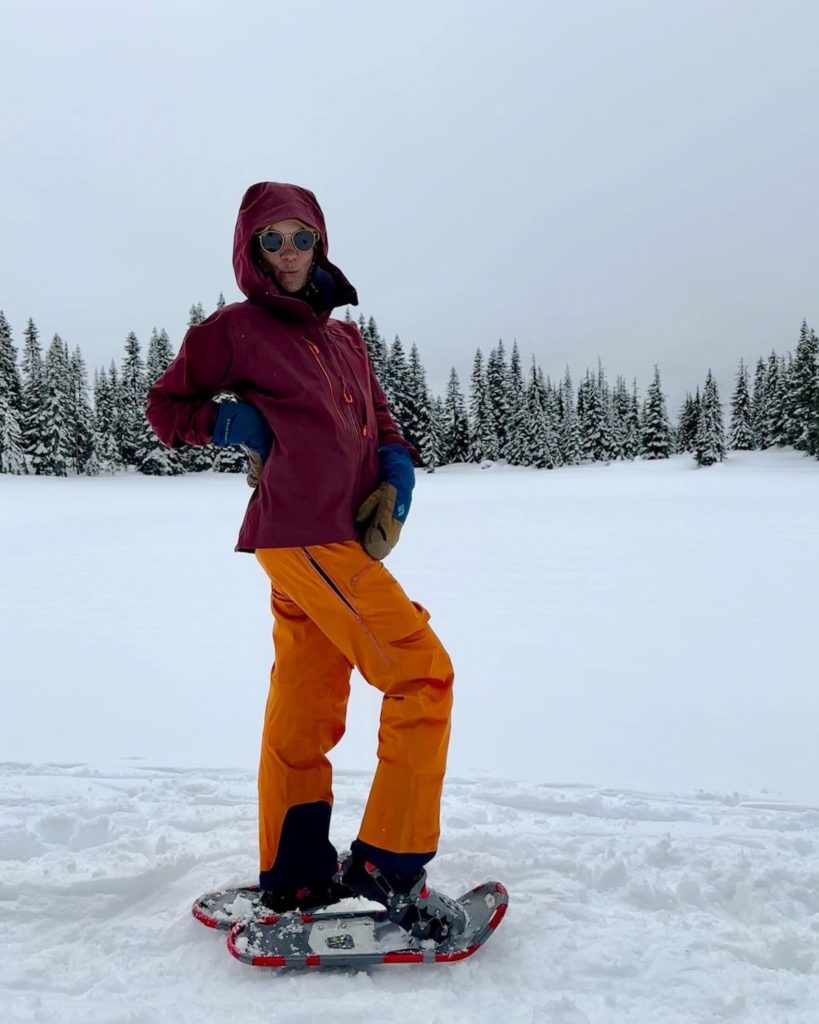
Best winter hiking gloves
I get cold fingers sooooooo easily and I’ve found that, yup you guessed it, layering helps keep them warm. Thin gloves are great in warmer winter weather, like between the 30s and 50s. If I’m in freezing temperatures, especially in the teens and lower, then I use insulated mittens as well.
- Best thin gloves: Thermal Merino Glove
- Best insulated mittens: Mercury Mitten
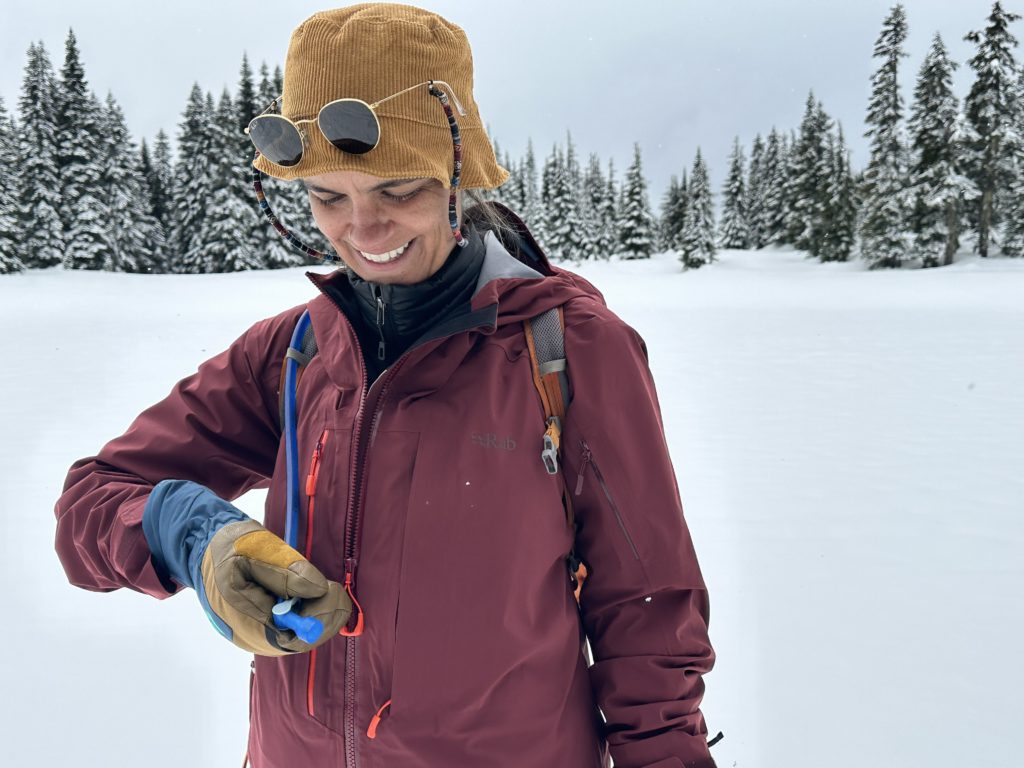
Best winter hiking hats
A warm hat will trap the heat from leaving your body, keeping your body temperature warm and stable. On warmer days, I grab my thinner hat but on especially cold days I go for fleece.
- Best cute winter hat: Quilted Puffer Bucket Hat
- Best thin winter hat: Reversible Pocket 200 Beanie
- Best warm hat: Cragmont Fleece Beanie
Best winter hiking socks
It doesn’t take much to keep your feet warm if you have a good pair of winter hiking boots. Even so, I always wear two pairs of warm socks: a thin layer and a thick layer. This layering system prevents cold toes and keeps my ankles warm when snow inevitably gets in my boots. This is what I own:
- Best thin: Emblem Midweight Sock
- Best cushion: Hike+ Medium Crew Sock
Best cold weather hiking boots
I only have two pairs of winter hiking boots, a lightweight pair and an insulated pair. When it’s a sunny day and easy to stay warm, I go with the waterproof Altras. In freezing temperatures, I go with the insulated winter boots.
- Best insulated: KEEN Women’s Revel 4 Mid Height Polar Insulated Waterproof Snow Boots
- Best lightweight: Lone Peak All-Weather Mid 2 Hiking Boot
WARNING: These Keen boots are quite stiff and take some time to break in. I honestly go for my Lone Peak Altras because they are 100% comfortable and can accommodate two pairs of socks.
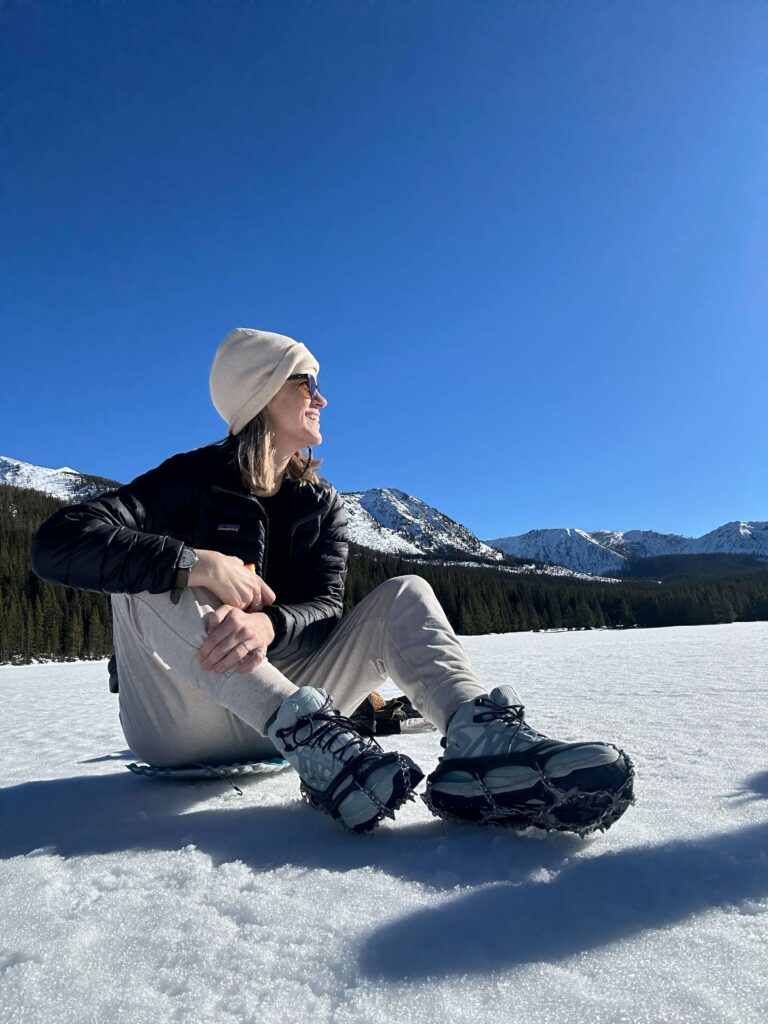
Cold Weather Hiking Gear
These winter hiking accessories will make your entire winter hike more enjoyable… trust me. Here is my winter hiking gear checklist:
- MICROspikes Traction System
- Solid Tube Facemask or EXski Winter Neck Gaiter Warmer
- Outdoor Research Rocky Mountain High Gaiters
- HotHands Hand Warmers
- Garmin inReach Mini 2 Satellite Communicator
- Pocket Chainsaw with Paracord Handle
- Camping Hatchet with Sheath
- Grill Trade Fire Starter Squares
Microspikes
Microspikes are my absolute favorite accessory for winter hiking. They will give you the best grip of your life, weather on icy surfaces, packed snow, or melting snow. Just be careful: I’ve gotten my spikes caught on my shoes a few times while walking and face planted right in the snow lol

They’re relatively lightweight so it’s easy to pack with you and slip on whenever you need them. These are the spikes I have:
Neck gaiter
If there is a cold wind, then you’ll appreciate a neck gaiter. I also like wearing a neck gaiter in freezing temperatures because I can pull it up over my nose.
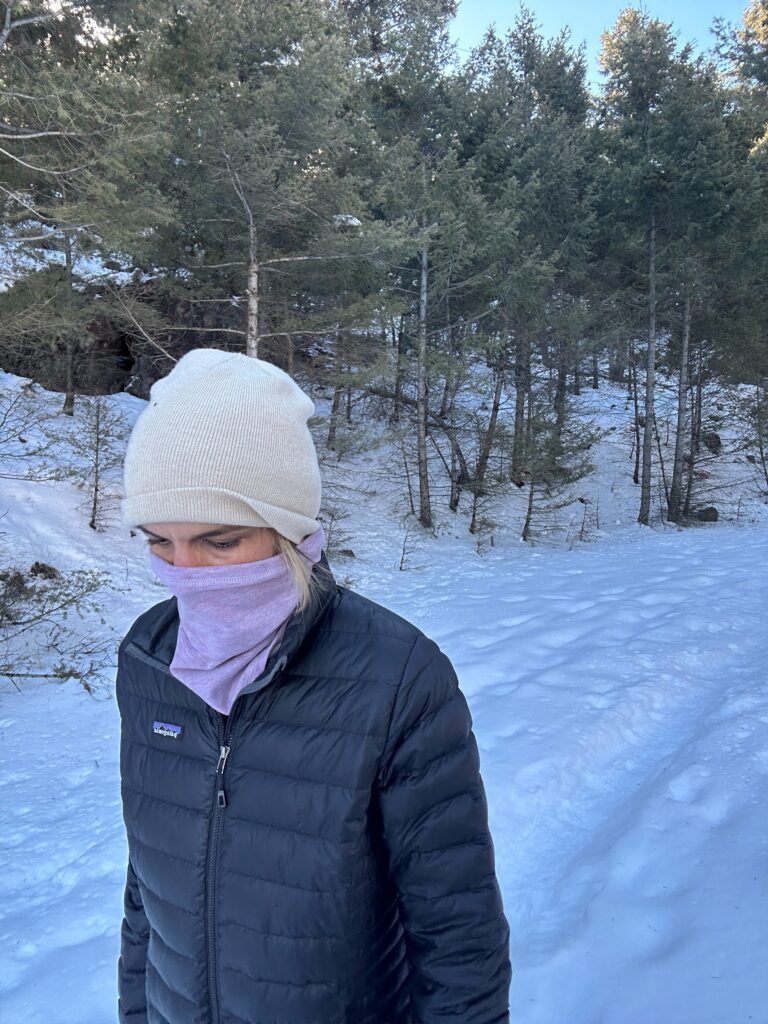
So much of staying warm is protecting your exposed skin and I find that neck gaiters are great for this. I can pull it up easily when the wind picks up and drop it down if I get too warm. These are my two favorite neck gaiters that I use both when hiking and skiing:
Gaiters
Gaiters are great for wet weather. As moisture settles on grass or bush, the gaiters protect your pants as you’re walking. If you’re trekking through deep snow, then you are better able to protect the opening at the ankle of your boot.
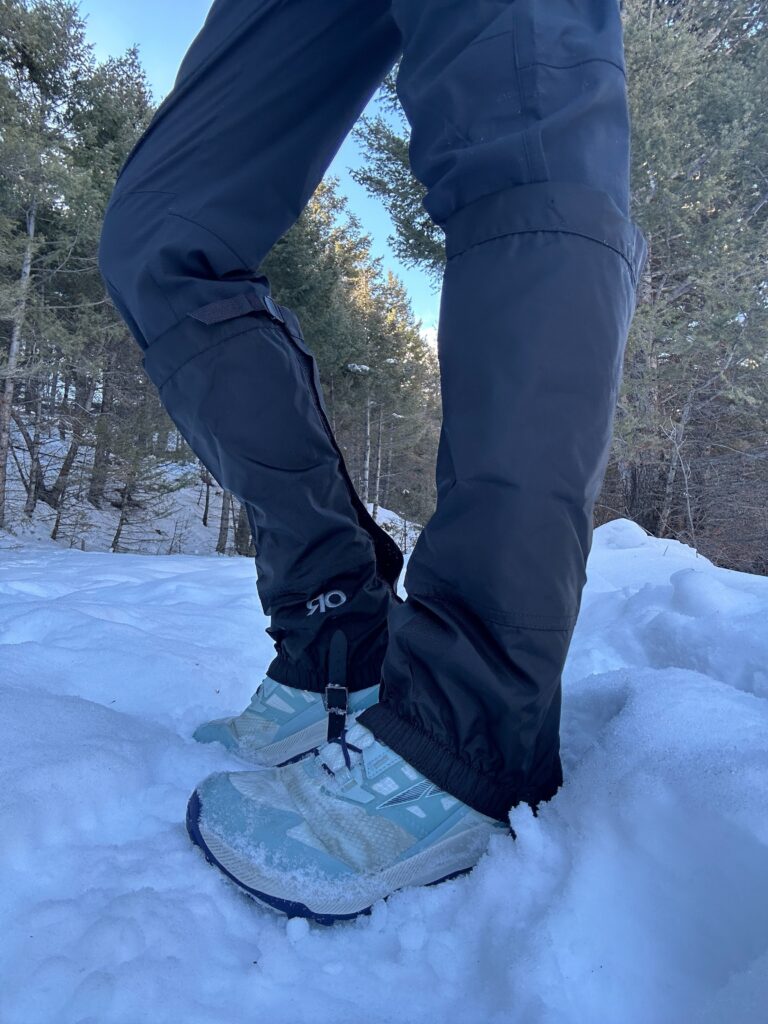
I like these gaiters by Outdoor Research because they’re easy to slip on and off and stay snug over my boots. My boots are waterproof but a little short for deep snow, so they get pretty full of powder when I’m not careful. These gaiters keep my ankles nice and warm.
Hand Warmers
Having hand warmers is great in a pinch. When I’m hiking, especially hiking uphill, I can stay warm easily. But in freezing temperatures or when I am sitting still in the cold weather, hand warmers help prevent cold fingers and toes.
Garmin inReach Mini 2
No matter what kind of hike I’m doing, I like to take my Garmin inReach with me… even for summer hiking. Whether I have an accident on the icy roads or get hurt miles away from service or get lost, I feel safe knowing that I have a satellite device to connect me with emergency services. I honestly appreciate this the most when I’m driving up the icy backroads and am worried I’ll slide off into a ravine. 😬
Emergency fire supplies
Safety is extremely important for any kind of winter adventure. I always like to be prepared for the worst case scenario and on winter day hikes this means being prepared to spend the night in the snow. Plus, it’s lots of fun making a fire at the halfway point of the hike 🙂
Closing thoughts
Winter clothing is really just about layering. There are no one-item-fits-all-weather-types. Staying warm is a huge part of hiking in cold weather, but so is comfort. What good is a bunch of bulky layers if you don’t have the flexibility you need to move your body?! Winter hiking also involves a lot of safety considerations because of the extreme temperatures. Have fun and be safe on your next cold weather hike!

